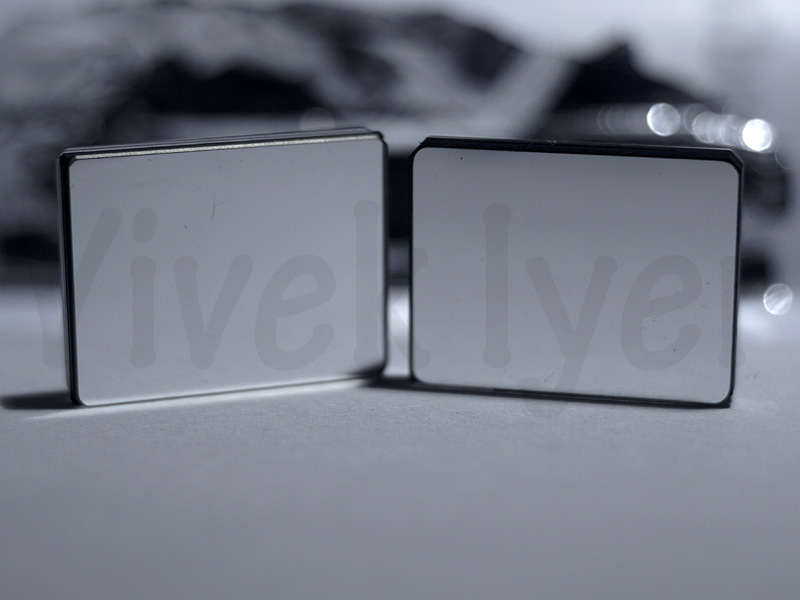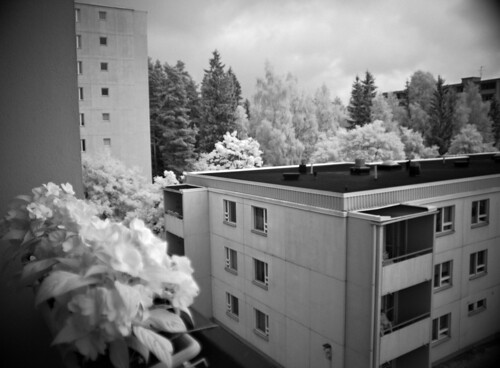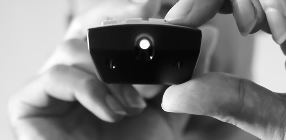photoSmart42
New member
My first IR test. Using the FD 28mm/2.8 lens with 2 layers of developed 120 slide film behind a Hoya Skylight (1B) filter. This is the most successful shot of the 12 I took. Had to make a bunch of adjustments until I got something I kinda liked.
ISO 800, f/8, 20" exposure

Learned a lot!
- I definitely need to add a spacer between the filter bottom and the slide film so it holds it as flat as possible against the lens body. I could see the effects of the warped film
- Probably need a lens hood for this. I seem to have gotten better results by using my palm to shield the side of the lens from the sun
- Started out with 3 layers of film and ISO 100, but eventually got it down to 2 layers and ISO 800 to minimize the exposure duration
- Started out with f/2.8, but wasn't getting sufficient DOF to get the scene in focus, so I eventually moved to f/8
I knew going in that using the DIY slide film method wasn't going to yield the sharpest photos, and the resulting grain could be useful for certain cases. I suppose my next step would be to look into an IR filter (way more expensive than my DIY setup), and eventually getting a dedicated IR body so I can make use of the live view feature and not have to guess at composition/focus, etc.
Overall, not a bad experiment.
-Dragos
ISO 800, f/8, 20" exposure

Learned a lot!
- I definitely need to add a spacer between the filter bottom and the slide film so it holds it as flat as possible against the lens body. I could see the effects of the warped film
- Probably need a lens hood for this. I seem to have gotten better results by using my palm to shield the side of the lens from the sun
- Started out with 3 layers of film and ISO 100, but eventually got it down to 2 layers and ISO 800 to minimize the exposure duration
- Started out with f/2.8, but wasn't getting sufficient DOF to get the scene in focus, so I eventually moved to f/8
I knew going in that using the DIY slide film method wasn't going to yield the sharpest photos, and the resulting grain could be useful for certain cases. I suppose my next step would be to look into an IR filter (way more expensive than my DIY setup), and eventually getting a dedicated IR body so I can make use of the live view feature and not have to guess at composition/focus, etc.
Overall, not a bad experiment.
-Dragos





